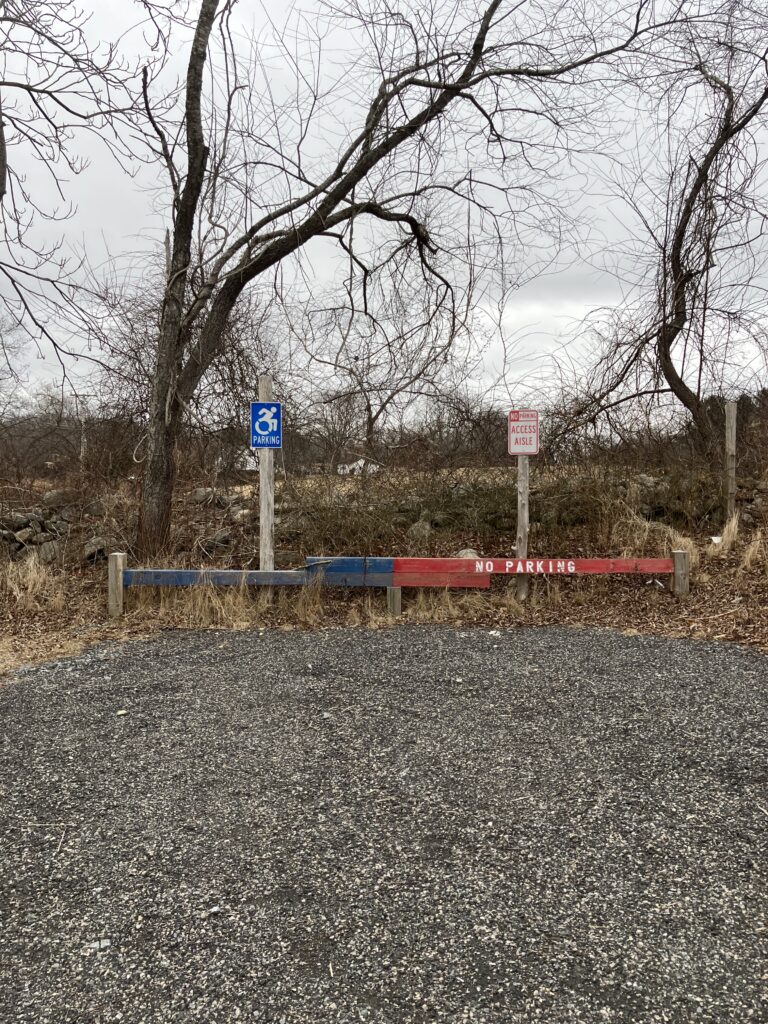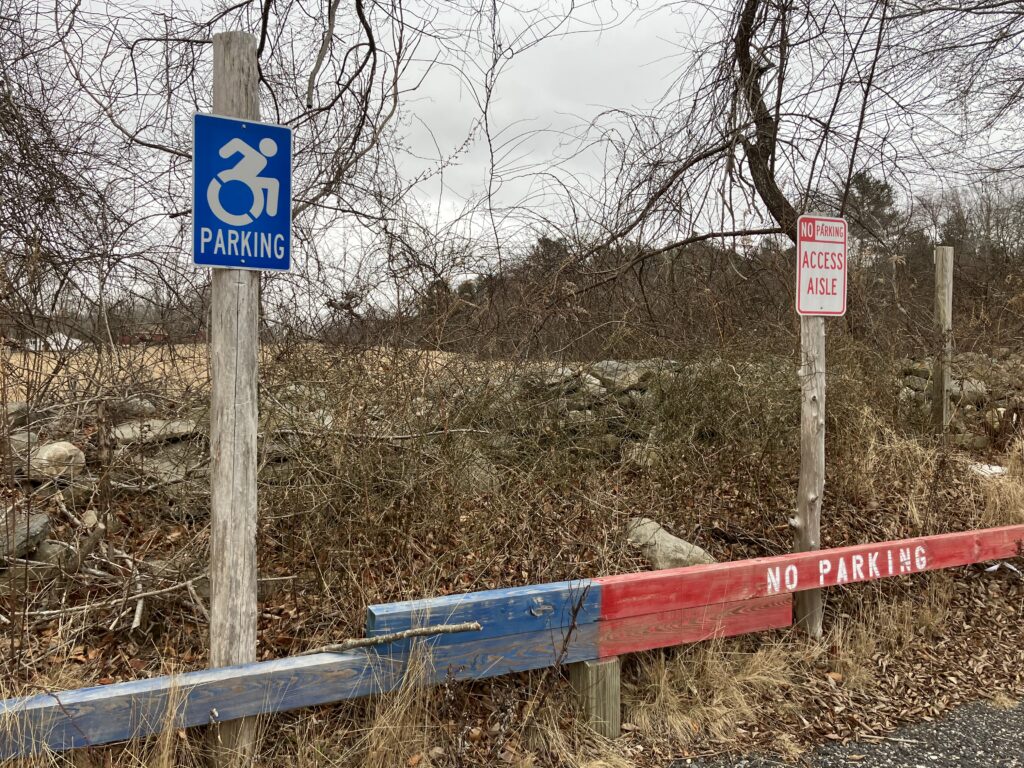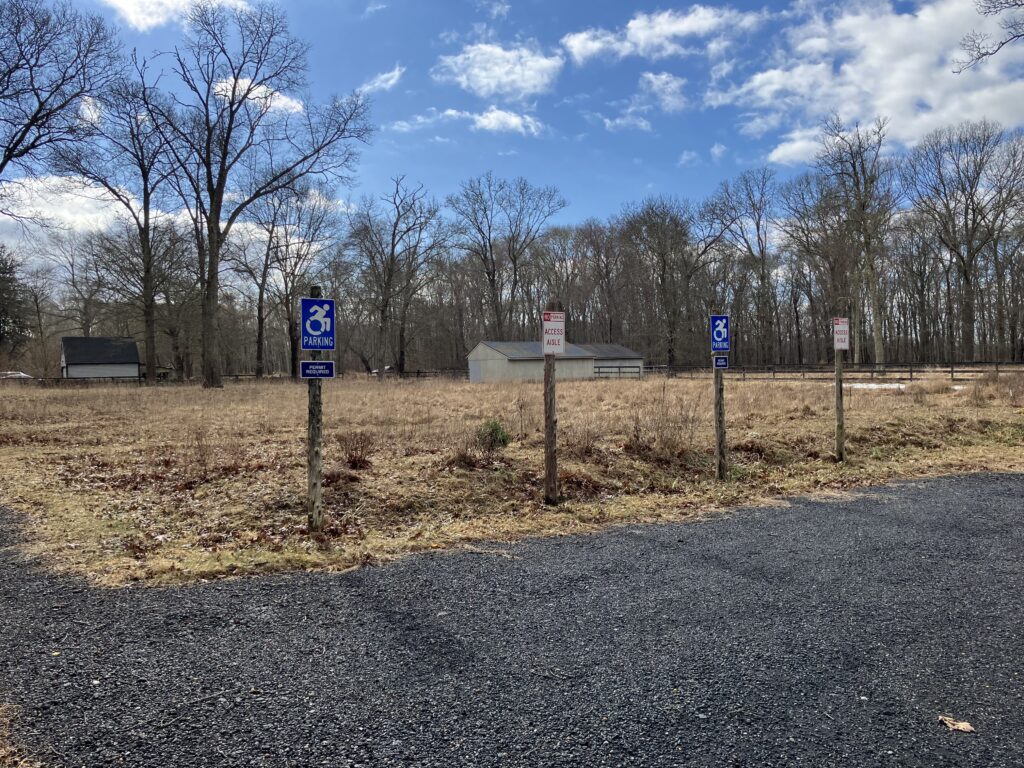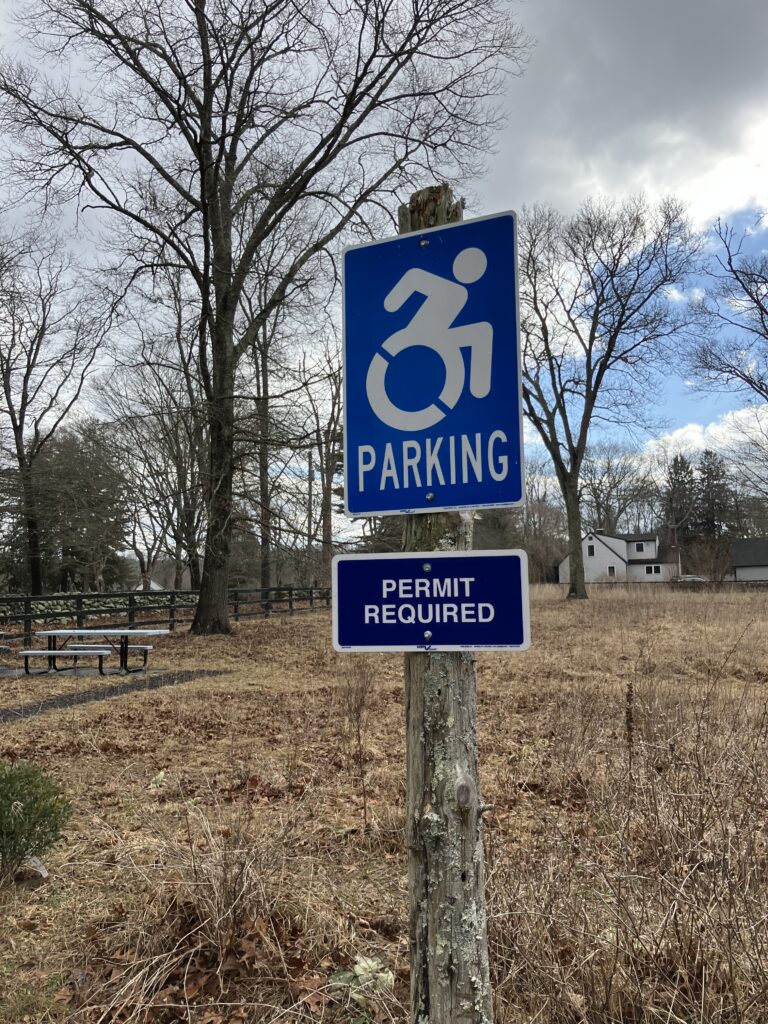
Accessible Parking on Avalonia Preserves
By Elanah Sherman
Over the past three years, Avalonia has been incrementally installing accessible parking on preserve parking lots. These spaces look quite different from the accessible spaces we’re used to seeing throughout Connecticut. That’s because those spaces conform to the requirements of the Connecticut State Building Code, which only applies to parking spaces that serve nearby structures.
When an entity’s parking area does not serve a structure, the entity defers to the parking standards of the Americans with Disabilities Act (ADA).
Now, bear with me – this is complicated stuff. But by the end of this article, you will understand the logic behind Avalonia’s accessible spaces and be able to explain it to others!
Similar to the look of Code-compliant spaces, ADA spaces typically have painted striping that delineates the space itself and the adjacent access aisle (which provides extra room for maneuvering mobility equipment or accommodating a ramp). For the paint to be secure, the surface needs to be paved. The complication for land trusts is how to meet the requirements of the ADA without compromising the ecological principles that would prohibit paving.
The ADA includes a defense that possibly could have been harnessed to exempt Avalonia from the accessible parking requirements because of ecological considerations. In the interest of providing maximum equal opportunity to people with disabilities, however, Avalonia wanted to find a solution that served both needs. The answer was found in Massachusetts, where the state’s Department of Conservation and Recreation came up with an innovative design that creatively meets the spirit of the ADA without sacrificing environmental integrity. The primary innovation of the space is the use of blue and red bumper guides to indicate the components of the space — space itself and access aisle — normally communicated by striping. Another innovation is the use of a second stanchion sign at the head of the access aisle that prohibits parking in the aisle.
In Avalonia’s smaller lots (per an ADA exception for lots having four or fewer total spaces*) those without permits may park in the accessible space – not the access aisle – when no other space is available. (The Building Code does not include such an exception, so you will risk a fine if you apply this exception for yourself in small lots governed by the Code.)
The below photographs of accessible parking in two Avalonia lots of different sizes illustrate the logic of the design. (At both of these lots, the required ‘Van Accessible’ signs have yet to be installed.)


In Photographs 1 and 2, taken at Cedar Wood Preserve in Norwich, the accessible parking stanchion holds a sign that simply shows the universal accessibility symbol – figure on wheelchair – with no additional signage restricting the space to permit holders. That is because this lot only has room for a total of four spaces, thus meeting the requirement for the ADA exception. (Explanatory signage is being planned at this site and similar others.)


Photographs 3 and 4 show the accessible parking at Copps Brook Preserve in Stonington. Because this lot has more than four total spaces, the exception does not apply. Thus, a “Permit Required” sign is affixed under the signs with the wheelchair symbol. The blue and red bumper guides have not yet been installed at this site. (In another connection, note the new rectangular picnic table, with accessible extension, visible in the background of Photograph 4!)
Signs at both locations do not include information about fines. That is because the ADA, unlike the Connecticut State Building Code, has no standard fine for parking violations.
If you still have questions or need some clarification, please don’t hesitate to contact the Avalonia office at avalonialc@yahoo.com or call us at (860) 884-3500.
*ADA Standards 216.5
